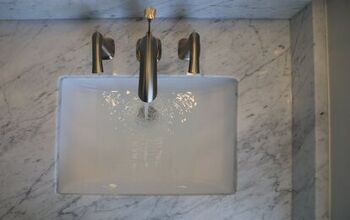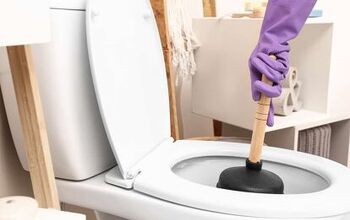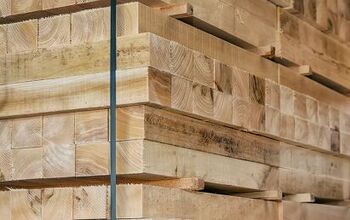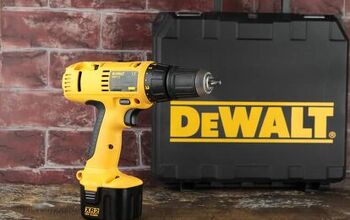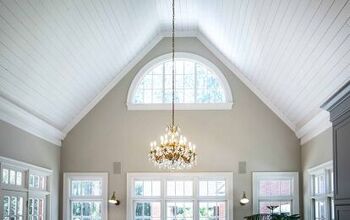How To Protect Outdoor Furniture In The Winter

Nobody likes to say goodbye to their outdoor furniture when the temperatures plummet. However, it’s necessary for many people who live in areas with cold, rainy winters where outdoor time isn’t always fun. Understandably, you may struggle with how to protect outdoor furniture in the winter.
Carefully clean, dry, and seal your outdoor furniture to protect it during the winter. Once the sealer is dry, you can cover it with a fitted, zippered cover to protect it from the rain and ice. Otherwise, you can cover your patio furniture with a waterproof tarp and secure it with a drawcord to keep moisture out.
Periodically check under the cover to make sure water isn’t getting in. Make sure to put the cushions away inside for the winter, so they don’t get moldy. Follow along as we explore how to protect outdoor furniture in the winter.
Can I Leave My Patio Furniture Outside In The Winter?
You can leave your patio furniture outside in the winter, but some of it may suffer damage. For example, some metals, like steel and iron, often cannot withstand the elements during the winter. Both metals can rust and may look bad when spring comes around.
That’s especially true in areas with cold, rainy, and snowy weather. Untreated hardwood, pine, maple, and wicker furniture are also susceptible to water damage. Excessive moisture and extreme temperature changes can cause some types of wood to warp and even rot.
Teak wood is an exception, as it can withstand moisture in both cold and warm weather. Aluminum and concrete are the most durable patio furniture materials that can be left outside in winter. However, aluminum chairs can still suffer damage if there are holes that could fill with water and ice.
How To Winterize Outdoor Furniture
1. Deep Cleaning
There’s no better time to clean your outdoor furniture than when it comes time to winterize it. Failure to clean and winterize outdoor furniture means that you will find it dirty and possibly rotten in the spring. First, you must rinse your furniture without oversaturating it.
You can wet a towel and wipe your furniture down if you can’t access a hose. Next, in a bucket, mix mild dish soap in warm water. Soak a sponge or rag in the soapy water and wash your patio furniture.
Depending on how cold it is outside, you may be able to let the furniture air dry. Otherwise, you must dry the furniture with a towel. This ensures that you can seal and cover the furniture to prevent mold and mildew from forming.
2. Seal It
While you don’t need to treat metal furniture for the winter, you must treat most types of wooden furniture. It’s best to bring wood furniture inside for the winter, but sealing it is the next best option. Your first option is to coat your patio furniture with outdoor paint meant to withstand the elements.
You can even find invisible waterproof paint, so you don’t change the wood’s natural appearance. The best way to seal wooden outdoor furniture in the winter is to use a marine-grade sealer. It’s typically clear, and you can buy a gallon of it for $30 to $50.
A nice varnish mixed with mineral spirits can also do the trick and protect your wooden furniture. Spar varnish is a particularly great option. Repeat the process with all your wooden furniture that you plan to leave outside, and let it dry.
3. Use A Cover
Once your outdoor furniture is cleaned and sealed (if it’s wooden), you can cover it. The process isn’t as simple as throwing a tarp on a chair, as water may still get in. Today, you can find fitted covers based on the dimensions of your furniture.
Some patio furniture even comes with fitted covers, and that’s the best option. However, you can also cover your outdoor furniture with a waterproof tarp. The only downside of using a waterproof tarp is that you must secure and seal it.
You can use straps and drawcords to fasten the cover to the furniture to ensure it doesn’t blow away. Otherwise, you can buy covers with zippers that fit your furniture perfectly. This is also essential to keep water from seeping into your furniture.
4. Put Your Cushions Away
Some homeowners mistakenly leave the cushions for their outdoor furniture outside during the winter. This may seem fine because cushions aren’t made of wood or metal. However, they are made of fabric and fillers that typically retain lots of water.
Cold temperatures slow how quickly water evaporates, so your cushions may become waterlogged. This is a recipe for disaster as mold and mildew can easily form within your outdoor cushions. Your best bet is to bring them inside or simply put them in a large sealed container.
5. Check On It
You can’t simply cover your outdoor furniture and ignore it until spring comes around. Instead, you must check on it every once in a while to make sure moisture doesn’t accumulate. This is less necessary with waterproof tarps, but it’s worth checking.
Simply unfasten the furniture cover, lift it, and check for signs of moisture. Pat the surface dry if you notice any wet spots. However, you may need to adjust the cover’s position altogether if you notice lots of water.
Large amounts of water may indicate a leak, so you must inspect the cover for holes and tears. While you may be able to patch the hole, it may not be worth it. Replace the cover altogether if you find a large tea,r as even sewing it may not fix the problem.
6. Bring Your Furniture Inside
Some people would rather be safe than sorry and simply bring their patio furniture inside for the winter. This is understandable, and it’s the best way to minimize damage. However, you must be careful about where you store your furniture as it may still be susceptible to mold.
For example, storing furniture in a damp, dark location can lead to problems with mold and mildew. It’s also important to make sure you don’t put your furniture in a room with pests. Even some dangerous pests, like brown recluses, seek furniture and other storage items in dark places.
You may need to rent a storage unit if you don’t have room to store furniture at home. In that case, your best bet is to rent a temperature-controlled storage unit. This can help protect your furniture from excessive moisture and thermal damage.
Summing It Up
The best way to protect your outdoor furniture in the winter is to seal and cover it. Use a marine-grade sealer or outdoor paint to protect wooden furniture from rain, ice, and cold weather. You can also store your patio furniture indoors to protect it from the elements if you don’t want to clean, seal, and cover it.
Related Guides:

Nick Durante is a professional writer with a primary focus on home improvement. When he is not writing about home improvement or taking on projects around the house, he likes to read and create art. He is always looking towards the newest trends in home improvement.
More by Nick Durante













![10 Best Electric Lawn Mowers - [2022 Reviews & Top Rated Models]](https://cdn-fastly.upgradedhome.com/media/2023/07/31/9070486/10-best-electric-lawn-mowers-2022-reviews-top-rated-models.jpg?size=350x220)
